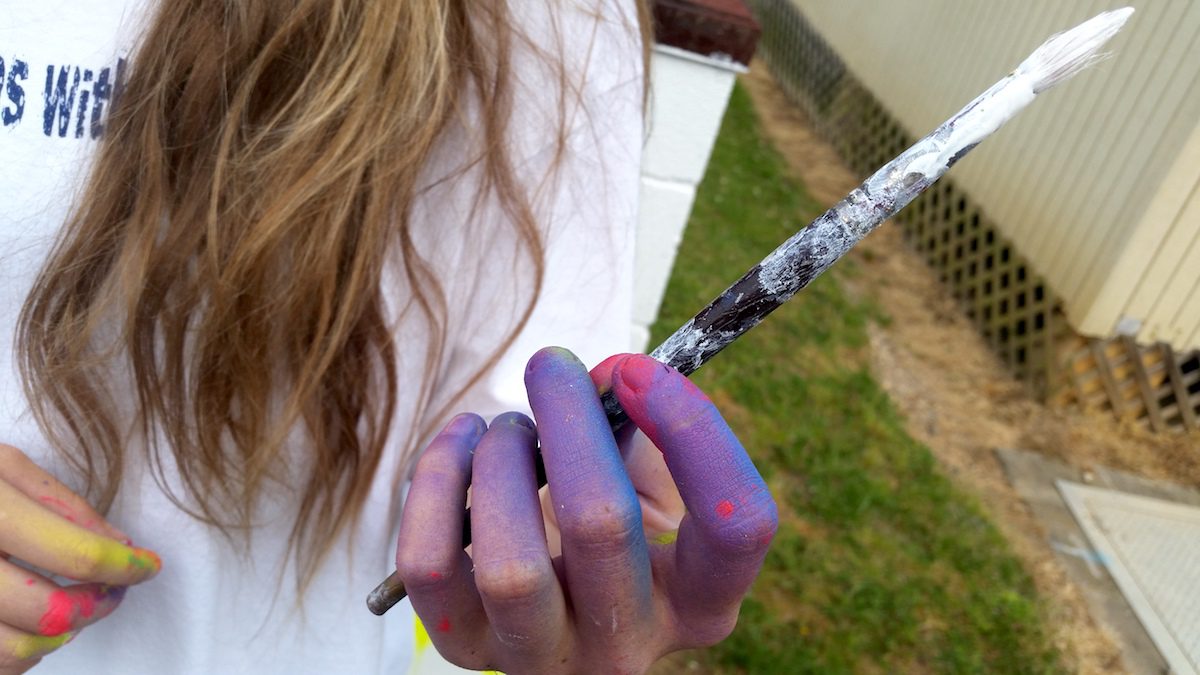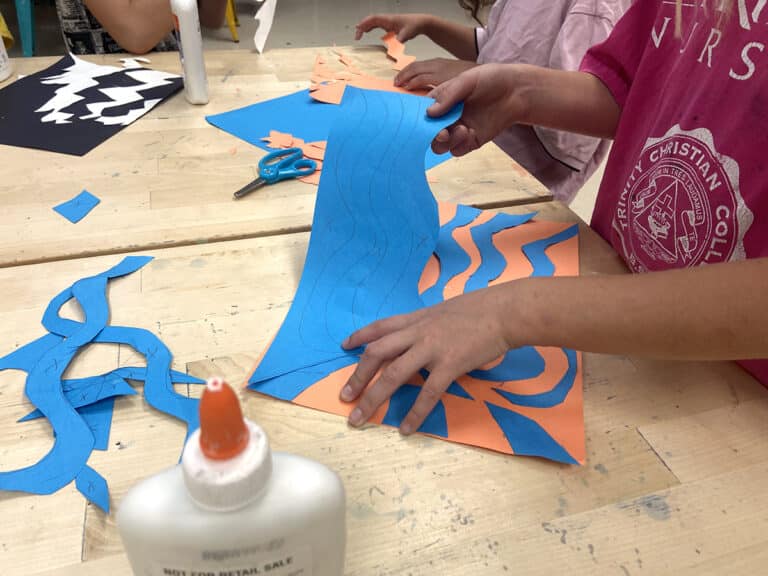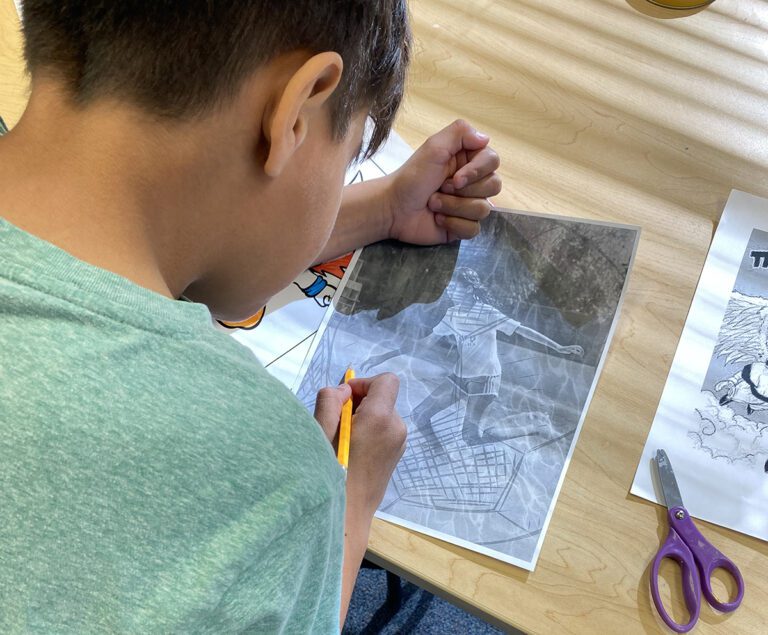As art teachers, we want our students to be capable and confident creative thinkers. We recognize, admire, and respect the ability of the artists we love to make art that’s fundamentally their own. We know it’s important to guide our students toward developing the skill set needed to do the same.
Creativity is a learned skill, but sometimes we wait until students are in advanced classes before they’re actually allowed to try their own ideas. Unfortunately, this is too late for the students who choose not to take advanced art classes.
In my own practice, I spent years thinking about how to move students at all levels from needing my support to making art independently. What I eventually came up with was a process called the Artistic Thinking Process, or ATP.
This framework works wonderfully to take my beginning high school students from unsure and needy to independent and confident.
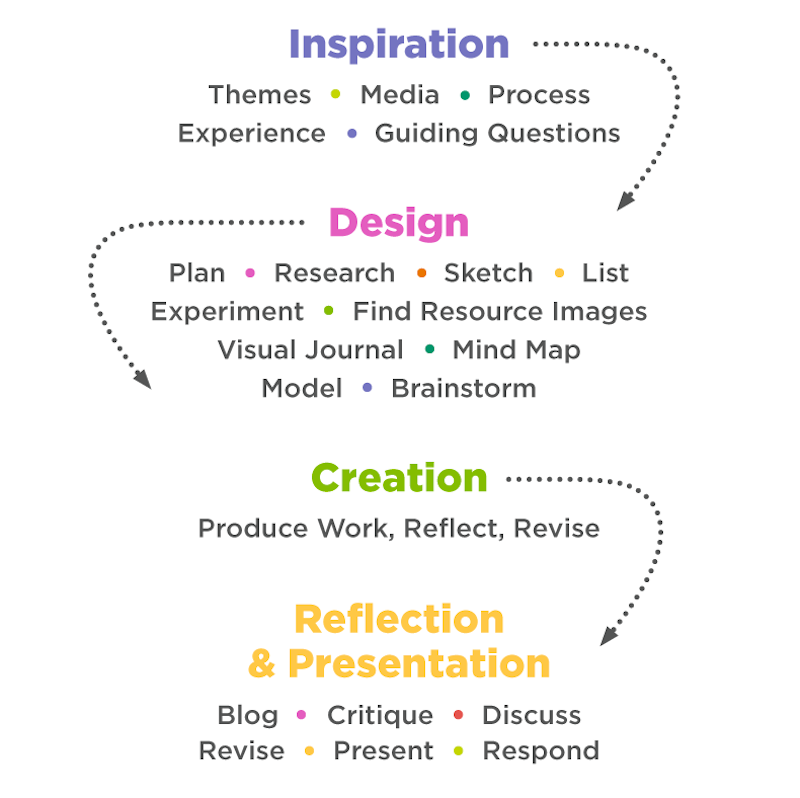
The Artistic Thinking Process is based on the creative process. It clearly lays out the process of finding an idea, developing that idea, creating work around the idea, and finally sharing that work and reflecting on it. It teaches strategies to help kids navigate each stage of the process.
Breaking the process down in this linear way, from finding inspiration to reflecting on finished work, is helpful for students. It allows them to see the big picture in a way they can easily follow independently. Of course, we know creating a piece of work often has detours. For students, this realization comes through teachable moments and experience.
Teaching the Artistic Thinking Process Through Scaffolding
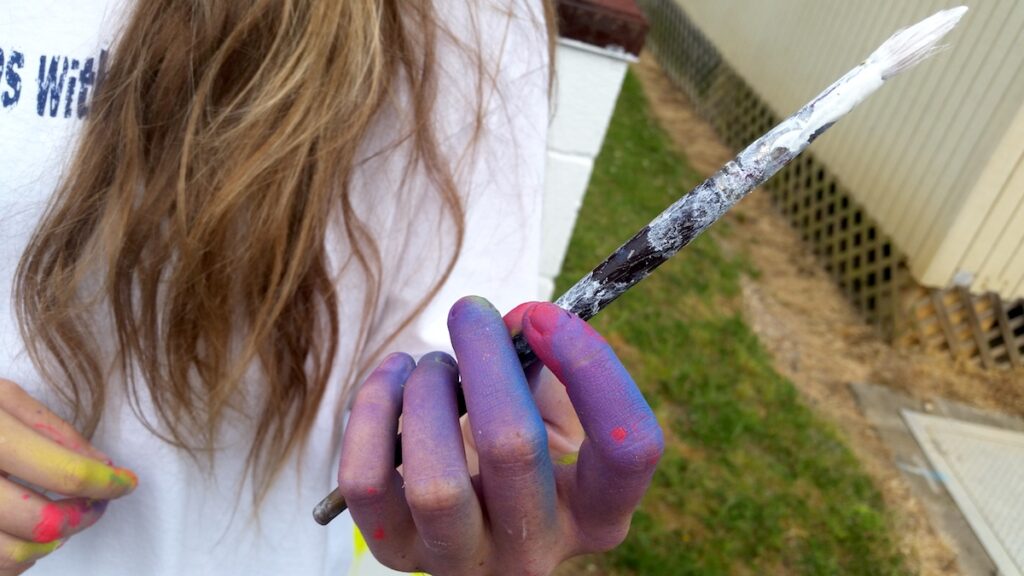
While this system works well, it’s important to start slowly.
Learning how to take an idea from conception to completion takes time and scaffolding. Therefore, I teach kids how to use the process with support before asking them to fly solo.
I teach specific lessons on the different steps of the process. In each, I model my thinking, provide time for collaborative learning, and ask kids to do independent practice. I especially focus on Inspiration and Development, as those are the two areas that can make the biggest difference in student work; for many students who are used to instruction where the teacher does most of the heavy thinking, having the responsibility of finding and pursuing an idea is a new and challenging experience.
As my students gain experience using the Artistic Thinking Process to move through the creative process, I gradually provide less support.
Instead of teaching specific strategies for each stage, I shift to asking students to make their own choices about how they will complete each step of the process. This builds until the end of the class, where students are asked to create a Final Portfolio. This acts as a final exam and is a collection of work made during the last few weeks of school. Students are required to use the Artistic Thinking Process to independently create, and they do!
The culmination of all of this hard work is a pop-up art show. Energy, creativity, and focus are at an all-time high. Students who had no idea where to begin at the start of the course no longer need me for ideas. This is exactly where I want them to be!
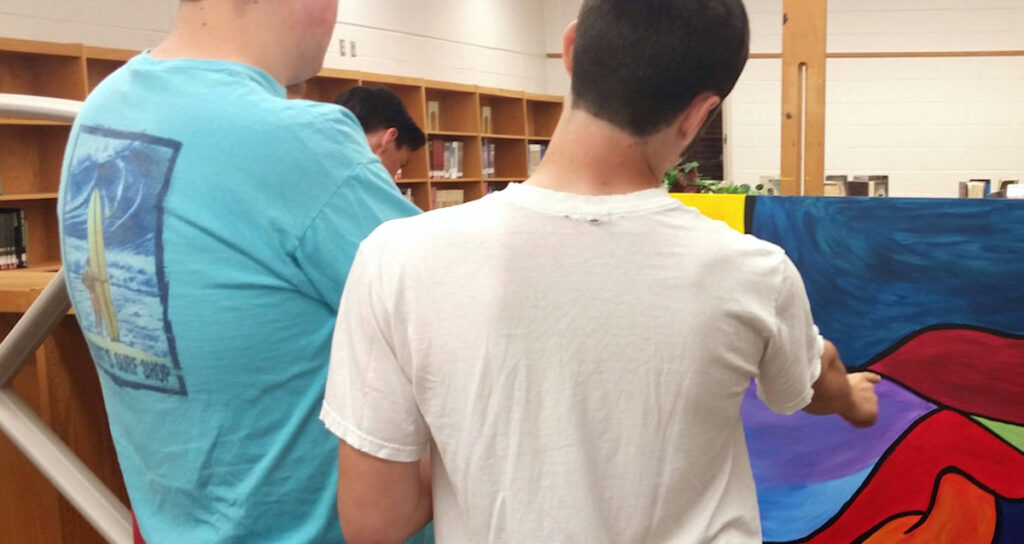
Giving our students project steps and answers isn’t doing them any favors. Instead, let’s give them the tools they need to become independent artists. Students are able to initiate and pursue amazing, wondrous ideas we’d never think of, and to develop their creative potential so they can release it into the world no matter what professions they pursue. It’s our job as art teachers to prepare our students for the future. To do this, we must teach them how to think for themselves. We must teach them how not to need us.
How do you teach the creative process in your classroom?
How independent do you think students should be in the art room?
Magazine articles and podcasts are opinions of professional education contributors and do not necessarily represent the position of the Art of Education University (AOEU) or its academic offerings. Contributors use terms in the way they are most often talked about in the scope of their educational experiences.
